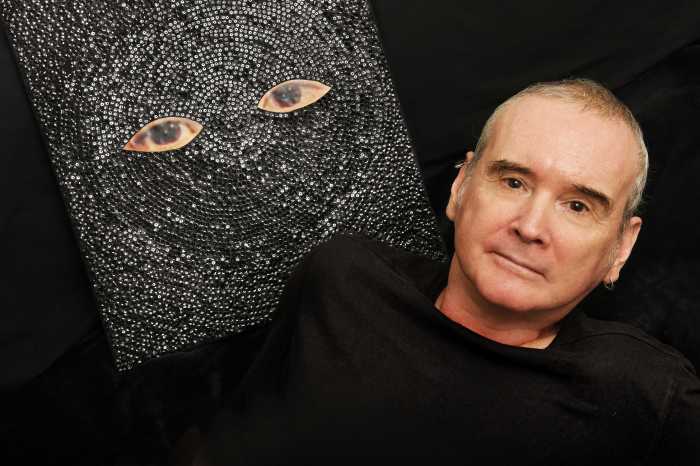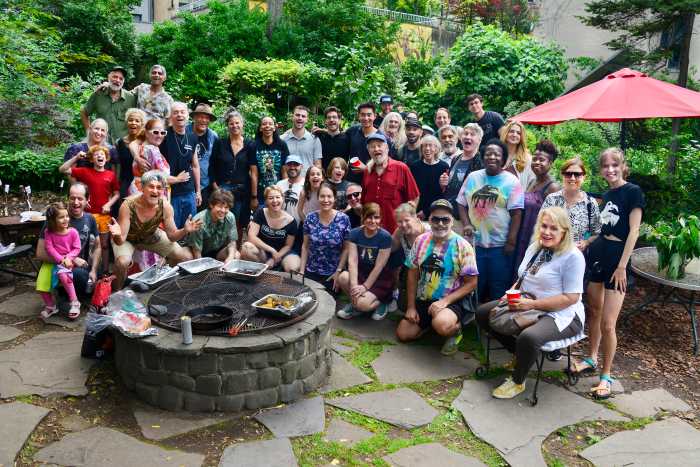By Patrick Hedlund
While 2008 might be remembered as the year that New York City’s once-unstoppable development boom finally went bust — rendering prospects for the year to come questionable at best — Downtown continued to see vibrant growth and activity from Chelsea to Battery Park. Mixed Use asked a handful of the community’s movers and shakers to put together their holiday wish lists, as well as offer some resolutions for 2009 and reflections on the year that was.
Andrew Berman, executive director of the Greenwich Village Society for Historic Preservation and a long-rumored candidate for the City Council, unsurprisingly counted Downtown preservation initiatives at the top of his holiday wish list. These efforts included designation of the South Village Historic District, about which his group has heavily lobbied the Landmarks Preservation Commission; a rezoning of the Third and Fourth Ave. corridors and the Bowery — which were left out of the East Village/Lower East Side rezoning — and of parts of the Far West Village and Hudson Square; a plan for a new St. Vincent’s Hospital that ensures proper services, while also respecting neighborhood preservation and upholding landmarks protections, and plans for the reuse of 75 Morton St. and Pier 40 that include community-friendly uses like schools.
Community Board 2 chairperson Brad Hoylman, who also considered a run at the Council, wished for a recuperating economy while citing that applications to his board’s Zoning and Housing Committee have dropped by more than 75 percent since last year.
“As a result of declining city revenues, we are concerned about cuts to public education, senior services and public transport — namely, the M8 cross-town bus — as well as the continued health of our local small businesses,” he said. Also in his board’s thoughts: a new middle school at 75 Morton St., a smaller and more affordable-housing-friendly St. Vincent’s project, the realization of a South Village Historic District and that the massive Pier 40, at W. Houston St., be developed in a manner “that respects the local neighborhood and preserves the active and passive recreational space,” he said. “This is a key resource to our neighborhood — let’s not simply sell it to the highest bidder.”
Community Board 3 District Manager Susan Stetzer wanted to make sure her always-busy board members will still have the resources they need to operate effectively.
“I hope that in this dire economy and with agency cuts that the community board receives sufficient funding to be able to continue to serve the community,” she said.
In the wake of Wall St.’s ongoing turmoil, Community Board 1 Chairperson Julie Menin hoped that Lower Manhattan’s neediest residents would not be forgotten.
“In these difficult times, we must put those who need help the most — our seniors, our youth, those who are struggling to make ends meet — at the top of our budget priorities,” she said. “Also at the top of my list is a new school Downtown, a new community center for the east side of the district and the building of affordable housing units, particularly in Tribeca and in the Greenwich South area.”
With budget cuts looming, City Councilmember Alan Gerson echoed the call for “humanitarian values” in protecting Lower Manhattan’s most vulnerable populations, and he also hoped that President-elect Barack Obama would deliver funds for infrastructure, healthcare, education and affordable housing in cities across the country.
“We wish for New York City planning and development that respects neighborhood diversity and livability,” Gerson said. “And we see a moment of great opportunity for culture to establish a formal role in the federal Office of Urban Policy so that we can finally begin harnessing the power of the arts to drive a new innovation economy, advance technology breakthroughs, promote civic pride and participation, rehabilitate our international standing, and stabilize and revitalize our cities.”
In addition to saying more funds should be spent on building affordable rather than luxury housing, Assemblymember Deborah Glick also gave a nod to the small businesses struggling to survive in her growing Downtown district.
“I wish we could preserve the unique individual stores that create a neighborhood feel and serve everyday needs, rather than see them fall prey to impossible rent increases that can only be absorbed by large chains or enormously expensive shops that don’t serve the local community,” Glick said, stressing that the emphasis should stay local. “I hope that the city will focus less energy on planning for the needs of tourists and more energy on planning for the needs of its residents, such as ensuring sufficient school space to accommodate both the children who currently live here and those who will surely arrive to fill the thousands of new residential units.”
State Senator Thomas Duane had a spate of housing issues on his wish list, including the push to repeal vacancy decontrol for rent-stabilized buildings; passage of the Real Rent Reform Bill and legislation making buildings that opt out of Section 8 and Mitchell-Lama programs rent-stabilized; designation of the South Village Historic District and rezonings of Chinatown and the east side of the Bowery; tax incentives and zoning changes to protect small businesses, and additional affordable and supportive, special-needs housing in Lower Manhattan.
Roberto Ragone, executive director of the Lower East Side Business Improvement District, said he is hopeful the city will continue to work with his organization despite the administration’s not incorporating the BID’s suggestions into its final rezoning of the area.
“The BID is excited to be working with Community Board 3, the Department of City Planning, Councilmember Alan Gerson and other community stakeholders as we continue the effort to restore the commercial vitality and improve the quality of life of the L.E.S.,” he said.
David Rabin, president of the New York Nightlife Association and the Meatpacking District Initiative, pointed to the importance of the city’s nightlife industry as a $10 billion economic engine.
“My wish is that people who live in New York City come to recognize how vital our reputation for nightlife is to tourism and to our economy,” he said, “and that people who run nightlife venues try their best to work with their communities and to lessen any quality-of-life impacts over which they realistically have control.”
Jennifer Falk, executive director of the Union Square Partnership, called 2008 a “momentous” year for the neighborhood, featuring the commencement of renovations at the north end of the park and square.
“Next summer, families will be able to enjoy the new, 15,000-square-foot playground, the plaza will have a new pedestrian-friendly design, with enhancements for Greenmarket farmers, and restoration of the iconic pavilion will continue,” she said. “Furthermore, the district saw more pedestrian traffic than in previous years, due to the diverse offerings, growing business and residential base and vibrant park programming.”
Real estate powerbroker Faith Hope Consolo, chairperson of Prudential Douglas Elliman’s retail leasing and sales division, said despite all the doomsday predictions, things are still looking up Downtown.
“From Chinatown to Chelsea, there has been solid activity,” she said. “In Meatpacking and Chelsea, alone, European retailers established a tremendous presence this year, especially in the immediate vicinity of W. 14th St.” While Union Square, Soho, Tribeca and the West Village also enjoyed typically robust activity, “Chinatown became an unexpected nexus for new retail business,” with major names like Nike and American Apparel moving in, Consolo noted. “Full-speed ahead is the direction of retail for at least the first two quarters of 2009, when many of the build-outs are completed,” she said. “The bottom line is that New York is still a city of shopaholics, but Downtown in particular has a unique crowd of dedicated retail devotees.”
Speaking of Chinatown, Wellington Chen, executive director of the Chinatown Partnership, said his neighborhood will continue to see growth through its position in the overall Lower Manhattan landscape.
“Chinatown’s fate is intertwined with many other neighborhoods, including Lower Manhattan,” he said. “Many of our community businesses need high volume in order to survive since they offer lower-cost alternatives, and one of these steady and predictable sources of business revenue will be from Ground Zero and its surrounding historical places.”
Friends of the High Line co-founders Robert Hammond and Joshua David are excited the first phase of the former elevated railway’s rebirth is about to yield fruit after their years of work.
“We look forward to opening the High Line in 2009 and seeing all of our neighbors and community supporters enjoying the park they helped build,” they said.
On the same track, Amanda Burden, commissioner of the Department of City Planning, called the High Line’s opening “one of the most singular and highly anticipated open spaces in the world.” She also looked forward to the planned redevelopment of the East River waterfront near the South St. Seaport in the spring, “which will create a spectacular and innovative waterfront experience.”
Sean Sweeney, the firebrand director of the Soho Alliance, had one simple wish for his community in its continuing battle against Donald Trump’s condo-hotel, which endured a tumultuous year of activity.
“My New Year’s wish is to witness the sight of Donald Trump lying on his back at Varick and Spring Sts., gazing skyward at his ugly building, belly up, both of them together,” he said.






























